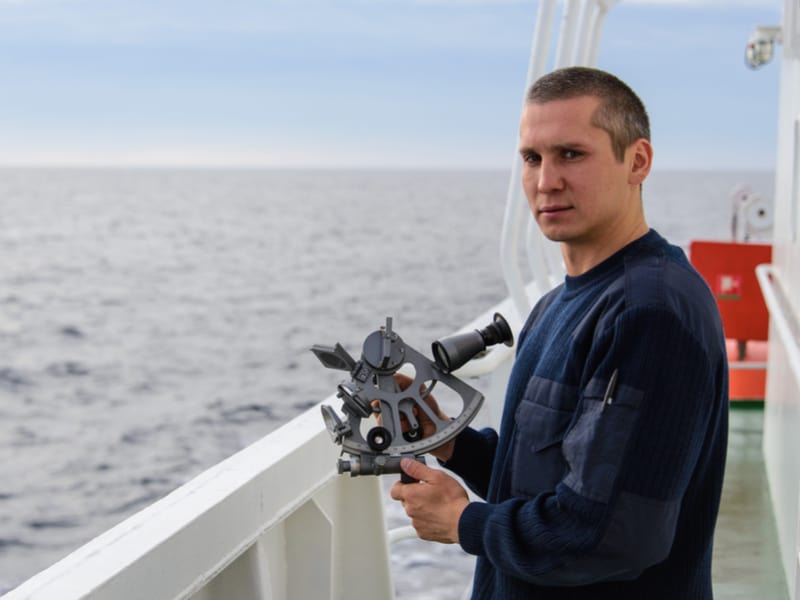A maritime labor-supply demand gap is opening up in Australia as its marine workforce is old and getting older, according to a new report from local domestic trade association Maritime Industry Australia Ltd. (MIAL). Worse still, there are fewer and fewer young people entering the local maritime industries.
Australian organizations employing seafarers were asked for their estimated forward demand for seafarer labor. This was defined as those individuals who have qualifications compatible with the International Convention on Standards of Training Certification and Watchkeeping. The survey was carried out in late 2018 and was published recently.
Organizations that responded to MIAL’s survey employed a total of 5,646 sea-going employees with seafaring skills. There were 4,669 maritime-capable employees employed in sea-going roles and 977 such individuals employed ashore.
Those respondent organizations estimate that, in five years from the date of the 2018 survey, i.e. 2023, they will need 11.6 percent more sea-going employees than they currently employ. A forecast growth in demand was predicted for all classes of seafarers – masters and deck officers (an extra 13.2 percent), engineer officers (9.7 percent) and ratings (an extra 11.5 percent).
There was an even greater demand-increase forecast for 2023 shore-based jobs that require seafaring skills and seafaring experience. Respondent organizations predict that they will need 17.7 percent more former seafarers to do shore-based jobs. A forecast growth in demand to fill shore-based jobs was predicted for ex-masters and deck officers (up 18.2 percent) and engineer officers (up 16.6 percent).
The International Convention on Standards of Training, Certification and Watchkeeping for Seafarers (STCW) certification takes a minimum of 12 months for the basic qualifications and more than three years for the advanced qualifications. Meanwhile, gaining the experience to transition into shore-based roles can take “many years,” and the report concludes that the 2023 labor demand for appropriately qualified and experienced staff will require “more seafarers and ex-seafarer than are currently in the workforce.”
Demography is not helping the situation either.
About 21 percent of the maritime workforce (all classifications) is under the age of 35. About 49 percent are in mid-career and are between the ages of 36 to 50. Just over 30 percent of the sea-going workforce is over the age of 50. Of these workers, who are in the latter stages of their career, 12 percent are between the ages of 51 and 55 while a further 12 percent are between 50 to 60 years old. Continued employment then falls off with only four percent working after the age of 60 and hardly anyone working in sea-going roles after the age of 65.
There’s a clear demographic bulge in the age profile of sea-going master and deck officers. Workers in this classification who are aged between 46 and 50 form the single largest cohort. They account for 19 percent of the sea-going master and deck-officer population. The percentage of the population engaged as masters and deck officers falls away on both sides of the age cohort of 46 to 50-year olds. There are hardly any young masters or deck officers – only nine percent of the population are engaged as masters or deck officers while being at, or under, the age of 30 at the time of the 2018 survey.
It’s a slightly different situation with engineer officers as there are several large cohorts throughout the age range. But there is, again, hardly anyone working as an engineer officer while being under the age of 30.
So, looking to the more distant future, say 20 or 30 years, it’s reasonable to draw an inference that there could be a major maritime workforce skills crisis as the current mid-career cohort will either be retired or close to it. And, on current numbers, there would not be enough people in the younger cohorts to replace them, unless the situation changes in the intervening time.
It’s a similar situation for the shore-based jobs that require maritime skills and experience but the potential crisis is, perhaps, even more pronounced as the shore-based jobs draw from a shrinking pool of sea-going employees.
That forecast is, in fact, already starting to come true. The age distribution of Australian seafarers is definitely showing an aging maritime-capable workforce. MIAL’s survey was previously carried out in 2013. There are 10 percentage points fewer seafarers under the age of 30 years in 2018 (8 percent) compared to 2013 (18 percent). There are five percentage points more seafarers over 46 years in 2018 (52 percent) compared to 2013 (47 percent). And, for the first time, the survey has revealed that there are a few seafaring capable personnel over the age of 70 when, previously, there were none.
Skilled migration is often touted as a potential source of personnel to fill labor demand/supply gaps. However, in Australia, that does not appear to be happening. Of a population of 4,669 seafarers, 97 percent were Australian nationals. Of 948 ex-seafarers in shore-based jobs, 97 percent were Australian nationals.
Commenting on the results, MIAL noted that, in the years since the last survey was carried out in 2013, Australia has had “a further decline in the number of cadets and trainees… this can be attributed to any number of reasons: the significant decline in the oil and gas sector, the further decline in the Australian coastal fleet and the costs of training. Furthermore, the current workforce is aging and the incentive to train does not exist for companies. The attraction of the Australian industry to the next generation of Australian seafarers is dwindling due to the lack of ongoing work… we are hearing that ports, pilots and regulators are now having trouble finding the skilled candidates they need to fill the strategic roles they have ashore.”











